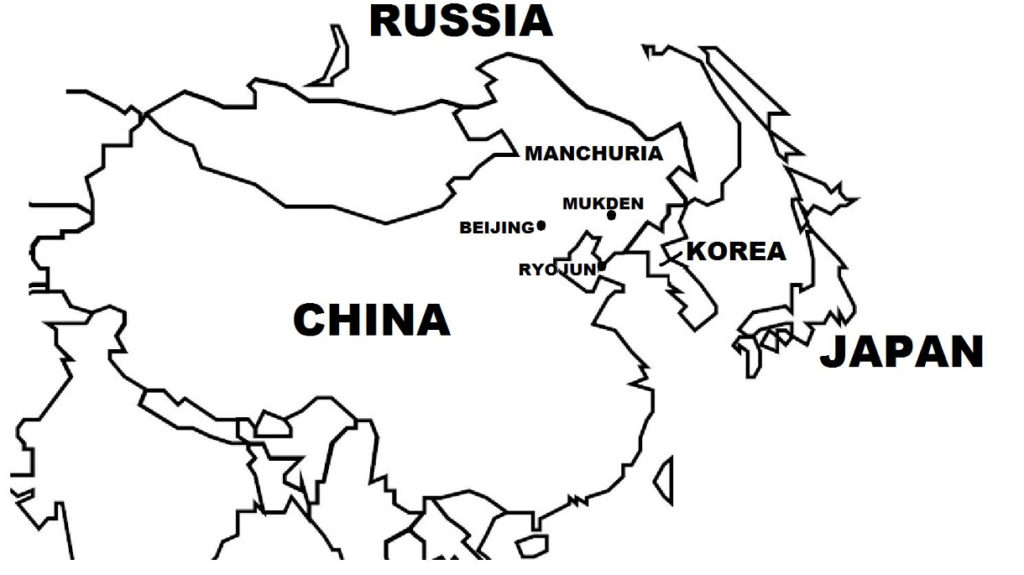To provide legitimacy to its conquest and occupation of Manchuria, on February 18, 1932, Japan established Manchukuo (“State of Manchuria”), purportedly an independent state, with its capital at Hsinking (Changchun). Puyi, the last and former emperor of China under the Qing dynasty, was named Manchukuo’s “head of state”. In March 1934, he was named “Emperor” when Manchukuo was declared a constitutional monarchy.
Manchukuo was viewed by much of the international community as a puppet state of Japan, and received little foreign recognition. In fact, Manchukuo’s government was controlled by Japanese military authorities, with Puyi being no more than a figurehead and the national Cabinet providing the front for Japanese interests in Manchuria.

(Taken from Japanese Invasion of Manchuria – Wars of the 20th Century – Twenty Wars in Asia)
Background To protect Japanese personnel and their interests, including the territory and railway, the Japanese military formed the Kwantung Army in 1906, which soon became dominated by radical officers who desired that Japan took a more aggressive foreign policy. Japanese troops protecting the railway were confined to a prescribed zone on both sides of the tracks, and by agreement were not allowed to operate beyond this perimeter.
In the late 1920s, the Kwantung Army drew up a plan to annex the whole of Manchuria for Japan, but this was contingent only if China provoked a war that could justify such an invasion. The deteriorating China-Japan relations were exacerbated by the intensely anti-foreign, particularly anti-Japanese, policies of Chiang Kai-shek’s Nationalist government. Japan, having gained territories and concessions in Northeast China through treaties, complained of many violations being committed by the Chinese, including infringing on Japanese rights and interests, interfering with Japanese businesses, boycotting Japanese goods, evicting and detaining Japanese individuals and confiscating their properties, and cases of violence, assault, and battery.
In 1928, China ended over a decade of political fragmentation and achieved reunification under Nationalist leader Chiang Kai-shek and his Kuomintang (KMT) government (previous article). Japan had opposed China’s reunification, viewing this as a threat to its ambitions in Manchuria. Elements of the Kwantung Army assassinated the leading Manchurian warlord, Zhang Zuolin, who had maintained a fragile but workable relationship with the Japanese. Zhang Xueliang, Zhang Zuolin’s son, succeeded as the leading Manchurian warlord, whom the Japanese hoped to win over. Instead, the young warlord recognized Chiang’s authority over Manchuria, and asked for financial assistance from the Nationalist government to construct railway and port facilities in Manchuria. The Nationalist government soon established civilian authority in Manchuria, setting up local administrative offices in the cities and towns. In April 1931, the Chinese government announced its intention to reclaim foreign-held concessions, properties, and infrastructures. Chiang, after reunifying China, had long sought to renegotiate with the foreign powers for the end of the Qing-era “unequal treaties”.
The Japanese naturally were alarmed, as the proposed projects by China threatened to compete directly with the existing Japan-controlled rail and port facilities. Back at home, Japan experienced rapid population growth pressures, a massive earthquake in 1923 that killed over 100,000 people, and economic difficulties in the Showa crisis (1927) and then the ongoing worldwide Great Depression. Japan’s political system also was highly unstable, as successive governments owed their existence to and were controlled by the Japanese military establishment.
In mid-1931, two incidents further aggravated relations between Japan and China. First, in late June, a Japanese Army officer, Captain Shintarō Nakamura, and his crew, conducting intelligence work in a remote area in Manchuria, were captured and executed by troops loyal to warlord Zhang Xueliang. A few days later, on July 1, 1931, when local Chinese farmers in Wanpaoshan village, Manchuria, attacked newly settled ethnic Korean farmers over a dispute on irrigation rights, Japanese police intervened and protected the Koreans. The second incident triggered widespread anti-Chinese riots in Korea, which was then a Japanese possession. The two incidents, particularly the Nakamura murder, also fueled Japanese public anger against China, and the Japanese military pressed its government to undertake stronger punitive actions against China.
Two years earlier, in 1929, a number of Japanese officers of the Kwantung Army, particularly Colonel Seishirō Itagaki and Lieutenant Colonel Kanji Ishiwara among others, had began preparing a contingency plan for a Japanese full-scale conquest of Manchuria. Taking advantage of Japanese public anger brought about by the two recent incidents, Colonel Ishiwara traveled to Tokyo and presented the now completed contingency invasion plan to the Japanese Military High Command, which the latter approved. In Ryojun (Port Arthur), Kwantung Army commander Shigeru Honjo also agreed to carry out the contingency plan, subject to the Chinese military precipitating a major incident that could justify a Japanese invasion.
However, the Japanese government, which maintained a conciliatory policy on its relations with China, issued instructions to the Kwantung Army’s investigation of the Nakamura incident, to proceed more diplomatically, which was a setback to officers who wanted to provoke a confrontation that would lead to war. Then when the Japanese military high command in Tokyo sent a high-ranking officer to Manchuria to provide counsel on the Nakamura murder negotiations with the Chinese, the plotters decided to take action.
